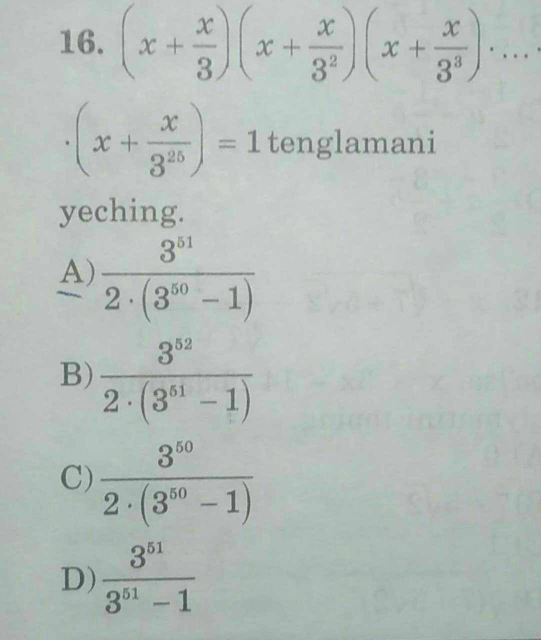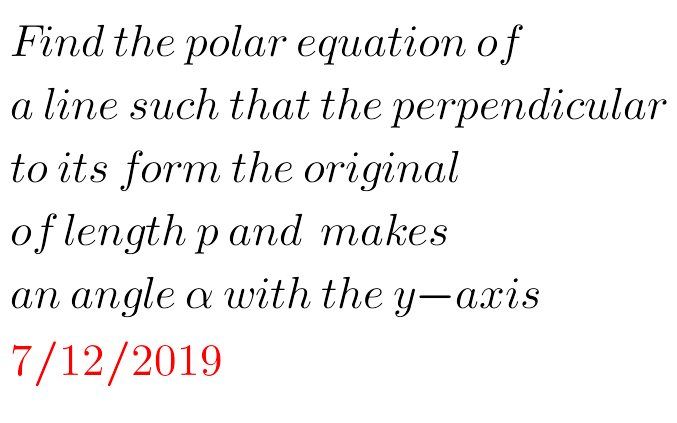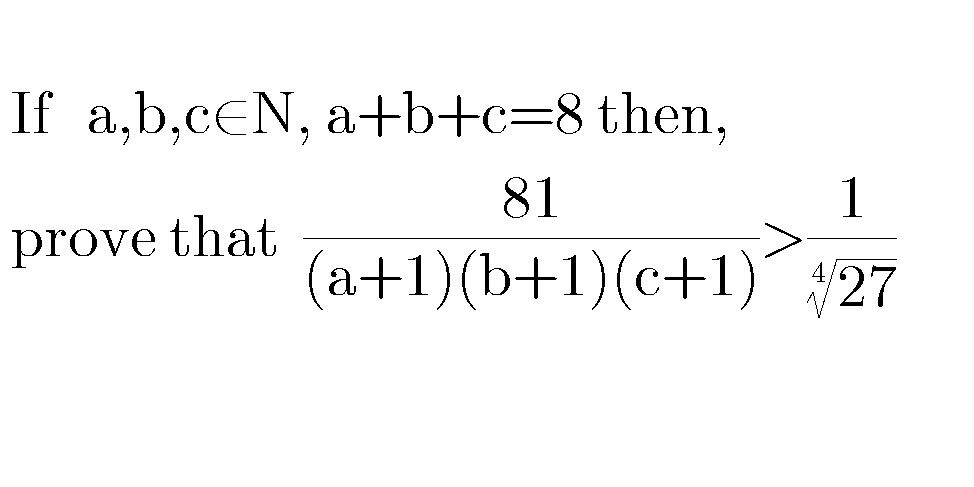
AlgebraQuestion and Answers: Page 295
Question Number 75299 Answers: 0 Comments: 1
Question Number 75272 Answers: 1 Comments: 0
Question Number 75267 Answers: 0 Comments: 5

Question Number 75262 Answers: 0 Comments: 3

Question Number 75218 Answers: 1 Comments: 1
Question Number 75176 Answers: 1 Comments: 0
Question Number 75158 Answers: 1 Comments: 0

Question Number 75136 Answers: 1 Comments: 3

Question Number 75110 Answers: 1 Comments: 0

Question Number 74947 Answers: 1 Comments: 0

Question Number 74912 Answers: 1 Comments: 0
Question Number 74900 Answers: 0 Comments: 2

Question Number 74910 Answers: 1 Comments: 0
Question Number 74880 Answers: 1 Comments: 0
Question Number 76203 Answers: 0 Comments: 7

Question Number 74801 Answers: 2 Comments: 2
Question Number 74786 Answers: 2 Comments: 1

Question Number 74742 Answers: 2 Comments: 1
Question Number 74716 Answers: 1 Comments: 0

Question Number 74712 Answers: 0 Comments: 2

Question Number 74663 Answers: 1 Comments: 0
Question Number 74604 Answers: 0 Comments: 3
Question Number 74599 Answers: 0 Comments: 0
Question Number 74615 Answers: 2 Comments: 0

Question Number 74614 Answers: 1 Comments: 0

Question Number 74611 Answers: 1 Comments: 0

Pg 290 Pg 291 Pg 292 Pg 293 Pg 294 Pg 295 Pg 296 Pg 297 Pg 298 Pg 299
